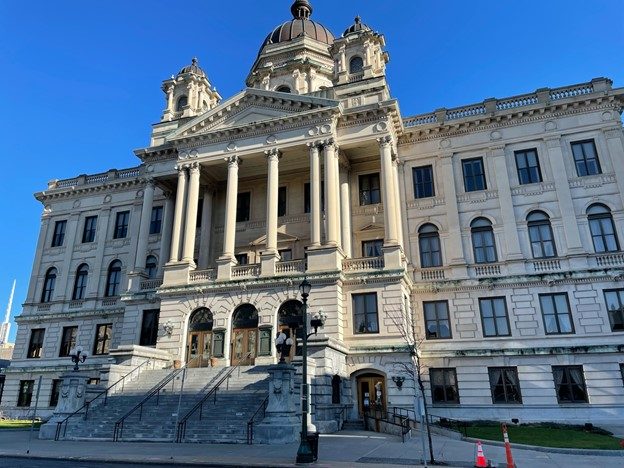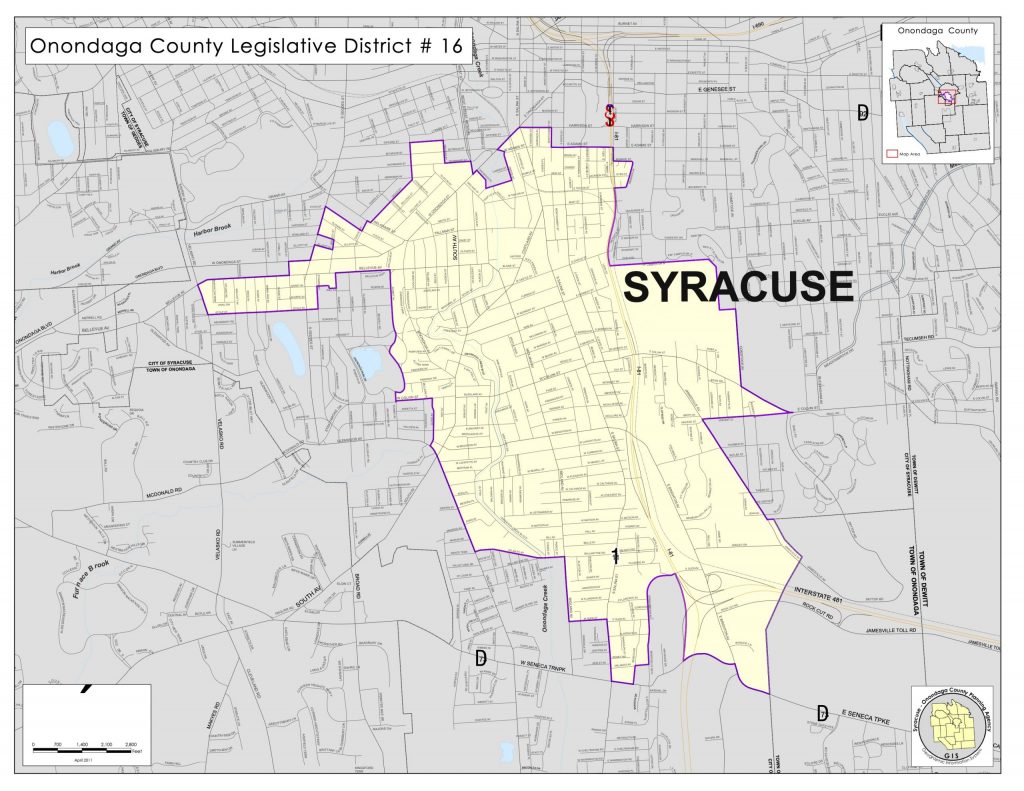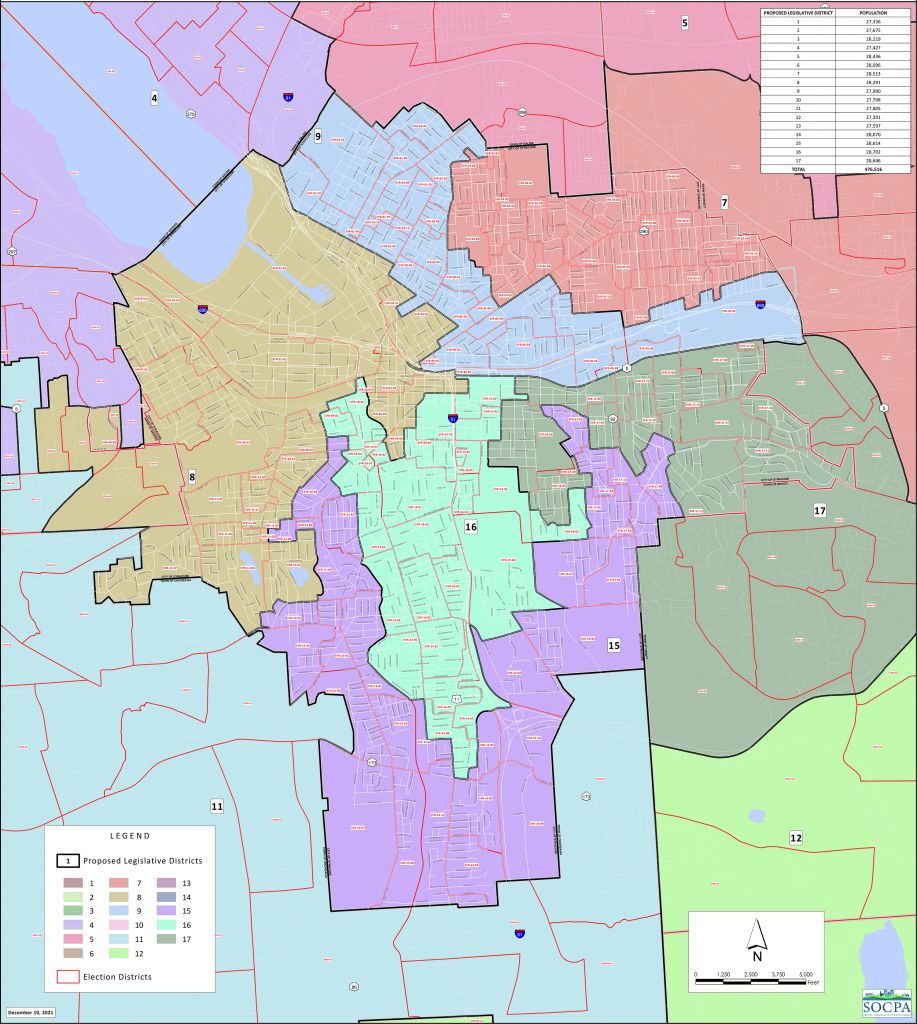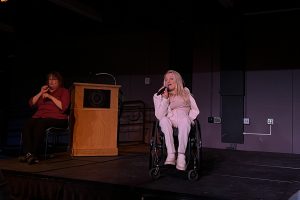Onondaga County Legislature passes controversial district map
Onondaga County Legislature passes controversial district map

Dustin Czarny locked eyes with Kevin Hulslander, chair of Onondaga County’s redistricting commission, and knew he was in for a long argument.
Czarny, the Democratic election commissioner, had been negotiating with Hulslander and other Republicans since October on redrawing the map that defines the county’s legislative districts. Czarny hoped that a November veto by County Executive Ryan McMahon of the redistricting commission’s first plan — which sought to eliminate the only Black majority district in the county — would make for a more productive conversation.
But Hulslander and his fellow Republicans remained dug in, and in late December, the county legislature passed a slightly revised plan that still leaves the county without a single Black-majority district. The plan expands District 16, which centered on the city’s historically Black South Side neighborhood, into whiter areas of the city. Other districts surrounding District 16 were then expanded further into the suburbs, also making them whiter and less representative of urban interests.
McMahon said he wasn’t happy with the plan. But despite public outrage, he signed it at the very end of 2021. So, without a successful court challenge, the new map will become law in 2023 and determine representation in county government for the next decade.
As outrage grows over the only Black district in the county being eliminated, calls for reforming the process and allowing for a more community-driven approach to redistricting are growing. That makes Onondaga County part of the national battle over voting rights and gerrymandering – the manipulation of election districts to gain an unfair political advantage for one party or interest group.
Czarny said the process was rushed and broken from the beginning.
“October 3 was the first time that they even started talking about it,” Czarny said. “They voted on October 8 to start the process. And then on November 3, they had the final vote on the Map. So that’s how fast it was.”
The first map also violated a new state law on the size of districts, which allowed McMahon to veto the plan Nov. 22 on a technicality. But he also said he hoped the county’s only Black-majority district could be preserved as the legislature went back to work.
Instead, the legislature fixed the technicality to comply with state law but still diluted the district in a 9-8 vote along party lines on Dec. 21.
Legislator Charles Garland, who represents District 16, said the problem started when the committee formed to redraw the district map failed to include any minorities.
“You have people making up these maps that have no idea,” Garland said. “Now, we feel that they want to gentrify us. They want to split us up. We’re physically still living in the same location, but we’re going to lose most of our power in terms of voting.”


He worried that this lack of representation and voting power would further erode the political will at the county level to deal with urban problems like lead poisoning and poverty in Black and Hispanic communities.
Dr. Sunny Aslam, a Democrat who ran unsuccessfully for the District 12 seat, said the redistricting process feeds into people’s cynicism toward government.
Aslam said Democrats got more votes than Republicans in the 2021 county legislature election if you look at all the districts combined. But because of the way the District lines are drawn, Republicans took more seats. It’s kind of like winning the popular vote for president but still losing the Electoral College.
According to Aslam, when Commissioner Czarny released the final vote tally, it was 49% Republican and 48% Democrat, yet the Republicans still won 11 seats while the Democrats took home 6.
“You see there’s a vast difference between how people voted versus the way people are elected, and I think all that contributes to a deep cynicism and distrust,” Aslam said.
So, Aslam said, the lines were already unfair based on the 2012 district maps, and the new map is even more skewed.
Mary Cunningham, a resident of Syracuse for 30 years, said the new district lines cut representation from urban areas when Syracuse already ranks as one of America’s most segregated cities.
“And right now, they’ve just made the city have less and less voice and I think it’s horrifying,” said Cunningham, who works with the group Families for Lead Freedom Now.
“It’s breaking up everything, and so much is against what both the state constitution and what Gov. Hochul’s law states,” Cunningham said. “She just passed it saying that neither the intention nor the result should be to diminish the voice of minorities or communities of interest.”
District 7 Legislator Mary Kuhn, a Democrat, said the legislative changes also rollback Democratic gains in key suburbs like the village of Manlius, which had been trending blue, by combining it with a red district.
“What these new maps did was take the village of Manlius out of the district of Manlius and placed it within District 12, which … is very heavily Republican,” Kuhn said. “So, it seemed very deliberate to take an area that has been trending blue and remove a big chunk of it and put it within a Republican district, which means they would most likely only be represented by a Republican legislator.”
Doug Wolf, a Syracuse resident of 30 years, says that the maps feel like they are made to stop public input. He wants to see a more community-driven process.
“It shouldn’t be elected officeholders [who draw the maps,]” Wolf said. “Every candidate signed a pledge that, if elected, they would advocate or they would support a citizen-led redistricting process and … once they were voted in, they changed their minds.”
The idea of community-led redistricting has gained traction both in New York and across the U.S., said Kim Margosian, a board member of the League of Women Voters. Margosian lives in Albany and said that people in areas across the country are tired of gerrymandering and have been pushed to action.
“It’s occurring so much across the board across the country,” Margosian said. “I’ve been seeing headlines of other states, other areas, and it’s the maps that are being produced by local legislatures that are being taken to court because the gerrymandering is so much in the process and they’re just not being fair and representative to the people who live there.”





